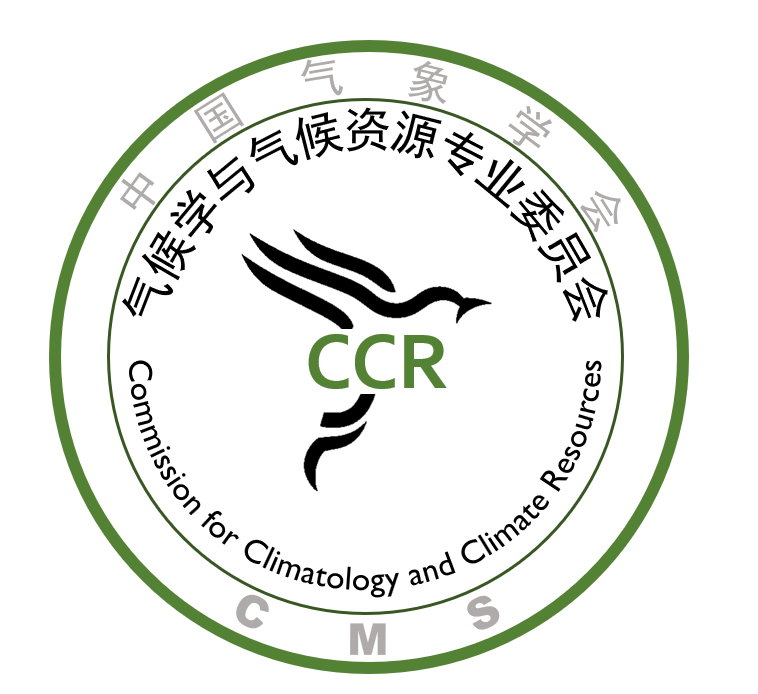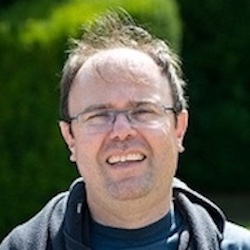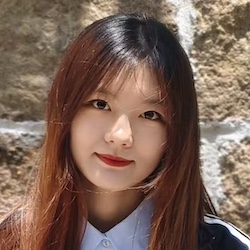| Session ID |
Presenting Author |
Affliation |
| MP-01 |
Ms. Zheng LIN |
Editorial office of Advances in Atmospheric Sciences |
| MP-02 |
Prof. Shuiqing YIN |
Beijing Normal University |
| MP-03 |
Prof. Wenting WANG |
Beijing Normal University |
| MP-04 |
Prof. Hongbo LIU |
Institute of Atmospheric Physics, Chinese Academy of Sciences |
| MP-05 |
Prof. Hongbo LIU |
Institute of Atmospheric Physics, Chinese Academy of Sciences |
| MP-06 |
Ms. Xuechao FENG |
Institute of Atmospheric Physics, Chinese Academy of Sciences |
| MP-07 |
Prof. Juan LI |
Nanjing University of Information Science and Technology |
| MP-08 |
Prof. Yang LIU |
Beihang University |
| MP-09 |
Dr. Guokun DAI |
Fudan University |
| MP-10 |
Dr. Luohong LI |
Innovation Academy for Precision Measurement Science and Technology (APM), Chinese Academy of Sciences |
| MP-11 |
Dr. Yuhan YAN |
State Key Laboratory of Severe Weather Meteorological Science and Technology, Chinese Academy of Meteorological Sciences |
| MP-12 |
Dr. Zhiqi ZHANG |
Shanghai Climate Center |
| MP-13 |
Dr. Zhaoyang CHAI |
Institute of Atmospheric Physics, Chinese Academy of Sciences |
| MP-14 |
Dr. Pak Wah CHAN |
Fudan University |
| MP-15 |
Dr. Peng Z |
Yunnan University |
| MP-16 |
Mr. Zihan YANG |
Yunnan University |
| MP-17 |
Ms. Yujun WANG |
Chinese Academy of Meteorological Sciences |
| MP-18 |
Ms. Dandan CHEN |
Institute of Atmospheric Physics, Chinese Academy of Sciences |
| MP-19 |
Ms. Yangke LIU |
Institute of Atmospheric Physics, Chinese Academy of Sciences |
| MP-20 |
Ms. Yao TANG |
Institute of Atmospheric Physics, Chinese Academy of Sciences |
| MP-21 |
Mr. Dipendra LAMICHHANE |
Institute of Atmospheric Physics, Chinese Academy of Sciences |
| MP-22 |
Mr. Bikash NEPAL |
Institute of Atmospheric Physics, Chinese Academy of Sciences |
| MP-23 |
Mr. Ankang QU |
Institute of Atmospheric Physics, Chinese Academy of Sciences |
| MP-24 |
Mr. Anling LIU |
Beijing Normal University |
| MP-25 |
Ms. Shiyu ZHANG |
Beijing Normal University |
| MP-26 |
Mr. Shentong LI |
Beijing Normal University |
| MP-27 |
Ms. Xinyao FENG |
Beijing Normal University |
| EC-01 |
Ms. Lu TANG |
Beijing Normal University |
| EC-02 |
Ms. Yuxian PAN |
Beijing Normal University |
| EC-03 |
Ms. Qinyao ZHOU |
Beijing Normal University |
| EC-04 |
Prof. Fei HUANG |
Ocean University of China |
| EC-05 |
Dr. Shuaimin WANG |
Hebei University of Engineering |
| EC-06 |
Ms. Huan ZHENG |
Chinese University of Hong Kong, Shenzhen |
| EC-07 |
Ms. Zimeng WANG |
Nanjing University of Information Science and Technology |
| EC-08 |
Dr. Bo DONG |
University of Reading |
| EC-09 |
Dr. Haoyu JIN |
Hohai University |
| EC-10 |
Dr. Lulu LIU |
Institute of Geographic Sciences and Natural Resources Research, CAS |
| EC-11 |
Dr. Jianying LI |
Chinese Academy of Meteorological Sciences |
| EC-12 |
Dr. Qian WANG |
Chinese Academy of Meteorological Sciences |
| EC-13 |
Dr. Liangliang LI |
Northwest Normal University |
| EC-14 |
Dr. Uttam SARKAR |
ICAR-NBFGR, ICAR, India |
| EC-15 |
Ms. Sihan ZHOU |
Beijing Normal University |
| EC-16 |
Mr. Zhongrui BAO |
Lanzhou University |
| EC-17 |
Ms. Min ZHAO |
Lanzhou University |
| EC-18 |
Dr. Gopinadh KONDA |
Center for Climate Physics, Institute for Basic Science |
| EC-19 |
Dr. Alexia KARWAT |
Research Center for Climate Sciences, Pusan National University |
| EC-20 |
Mr. Dong CHEN |
Sun Yat-sen University |
| EC-21 |
Dr. Lei NAN |
Lanzhou University |
| EC-22 |
Ms. Yixin LIANG |
Hubei University |
| EC-23 |
Ms. Xiaolan LI |
Hubei University |
| PD-01 |
Prof. Dingzhu HU |
Nanjing University of Information Science and Technology |
| PD-02 |
Prof. Suxiang YAO |
Nanjing University of Information Science & Technology |
| PD-03 |
Prof. Zhiwei ZHU |
Nanjing University of Information Science and Technology |
| PD-04 |
Prof. Shaobo QIAO |
Sun Yat-sen University |
| PD-05 |
Prof. Shuangyan YANG |
Nanjing University of Information Science and Technology |
| PD-06 |
Prof. Liang WU |
Institute of Atmospheric Physics, Chinese Academy of Sciences |
| PD-07 |
Dr. Jiawen SHI |
Key Laboratory of Cities' Mitigation and Adaptation to Climate Change in Shanghai, Shanghai Regional Climate Center |
| PD-08 |
Mr. Qin DUAN |
Guangdong Key Laboratory of Ocean Remote Sensing, State Key Laboratory of Tropical Oceanography, South China Sea Institute of Oceanology, CAS |
| PD-09 |
Ms. Xueqing DU |
City University of HK |
| PD-10 |
Dr. Binhe LUO |
Beijing Normal University |
| PD-11 |
Dr. Guiping LI |
Hohai University |
| PD-12 |
Dr. Hao LI |
Ghent University |
| PD-13 |
Dr. Jia SONG |
Hohai University |
| PD-14 |
Dr. Qian HUANG |
Nanjing University of Information Science and Technology |
| PD-15 |
Dr. Jeongeun YUN |
Pusan National University |
| PD-16 |
Ms. Jiaqin MI |
Lanzhou University |
| PD-17 |
Ms. Peishan CHEN |
Institute of Atmospheric Physics |
| PD-18 |
Ms. Xueying WANG |
School of Atmospheric Sciences, Sun Yat-sen University |
| PD-19 |
Mr. Yihou ZHOU |
School of Atmospheric Sciences, Sun Yat-sen University |
| ES-01 |
Prof. Dengshan ZHANG |
Qinghai University |
| ES-02 |
Dr. Jazbia SHIRIN |
Peking University Graduate School |
| ES-03 |
Ms. Zhijian LIN |
Shandong Jianzhu university |
| ES-04 |
Ms. Wenxuan HUA |
The Hong Kong University of Science and Technology (Guangzhou) |
| ES-05 |
Ms. QiuLan HE |
Yunnan Key Laboratory of Meteorological Disasters and Climate Resources in the Greater Mekong Subregion, Yunnan University |
| ES-06 |
Mr. Taohui LI |
Yunnan University |
| ES-07 |
Mr. Zheng LIU |
Yantai University |
| ES-08 |
Dr. Jia WEI |
The Hong Kong Polytechnic University |
| ES-09 |
Dr. Vishnu Pratap SINGH |
Indian Science Communication Society |







































































